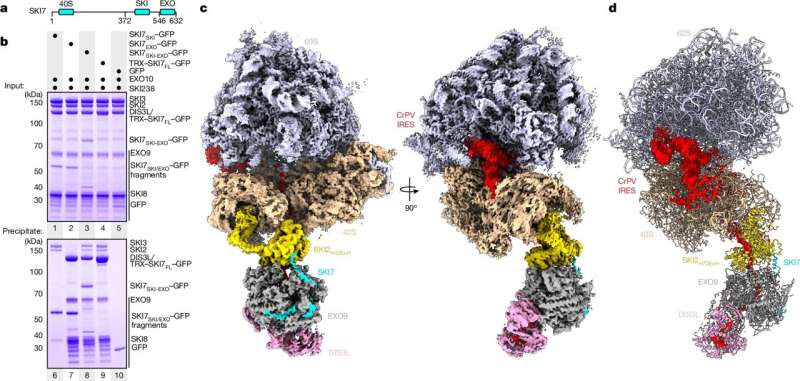Messenger RNA (mRNA) is the critical link between our genes and the proteins they encode. Now, researchers have uncovered a fascinating discovery about how the cellular machinery responsible for mRNA translation and degradation are physically connected, forming a supercomplex. This breakthrough provides new insights into the complex quality control mechanisms in our cells.

Unraveling the Intricate Dance of mRNA Processing
Messenger RNA (mRNA) is the essential blueprint for protein synthesis within our cells. Once an mRNA molecule has fulfilled its purpose, it must be degraded to maintain cellular homeostasis. The research team, led by Director Elena Conti at the Max Planck Institute of Biochemistry, has uncovered a remarkable discovery about how the key players in this process – the ribosome, the SKI complex, and the exosome – work together in a coordinated fashion.
Previous studies had shown that the SKI complex and the exosome, the two main complexes involved in mRNA degradation, form a stable partnership. However, the new high-resolution structural data has revealed that these three large protein complexes actually assemble into a supercomplex, creating a seamless connection between mRNA translation and decay.
The Supercomplex: A Quality Control Mechanism for Cellular Protein Production
The ribosome, often referred to as the ‘protein factory’ of the cell, is responsible for translating mRNA into a specific sequence of amino acids, ultimately resulting in the production of a new protein. The SKI complex then steps in, serving as a ‘hand’ that transports the mRNA to the exosome, which functions like a ‘molecular shredder’ to degrade the mRNA.
The researchers have now shown that when a problem arises, such as a collision between two ribosomes translating a damaged mRNA, the SKI complex is recruited to the ribosome. The SKI complex then unwinds the mRNA, allowing it to be transferred to the exosome for degradation. This process is facilitated by the protein SKI7, which bridges the interaction between the SKI complex and the exosome. The high-resolution structural data has provided a visual representation of how these individual components fit together, like the parts of a well-oiled machine, to ensure the quality control of cellular protein production.
Technological Advancements Enabling Groundbreaking Discoveries
The remarkable progress in the field of cryo-electron microscopy and the development of AI-based software, such as AlphaFold, have played a crucial role in enabling scientists to examine larger protein complexes and understand their intricate interactions. These technological advancements have allowed the researchers to visualize the supercomplex and reveal the precise connections between the ribosome, the SKI complex, and the exosome.
This study serves as a testament to the power of interdisciplinary collaboration and the ongoing scientific exploration of the complex machinery that underlies the fundamental processes of life. By unraveling the mechanical details of mRNA translation and decay, the researchers have opened new avenues for understanding cellular quality control mechanisms and potentially identifying targets for therapeutic interventions.
